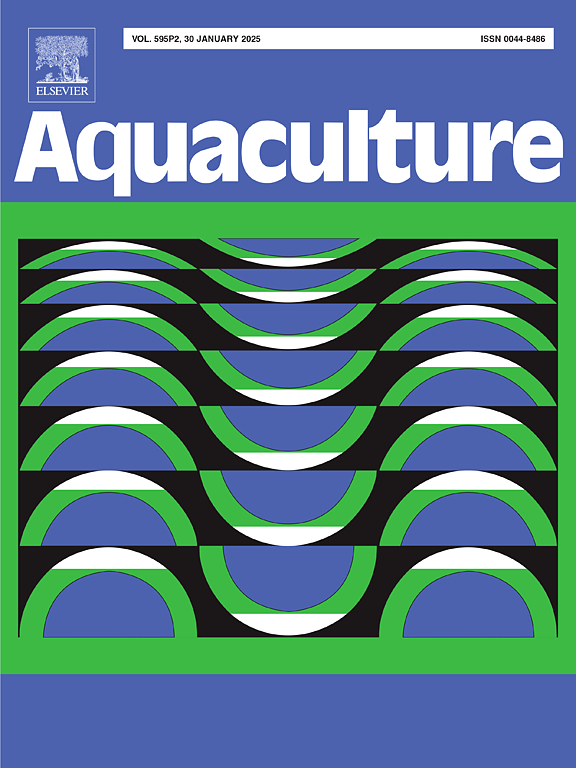The effects of different diets on growth, feeding preference, and intestinal microbiota of juvenile sea cucumber Holothuria leucospilota
IF 3.9
1区 农林科学
Q1 FISHERIES
引用次数: 0
Abstract
Finding an efficient and cost-effective feed is of great significance for the aquaculture and restocking of sea cucumber Holothuria leucospilota. In this study, the performance of juvenile H. leucospilota which were fed with commercial formulated feed (P), was compared with those fed by six different types of algal powders Sargassum sp. (S), Ulva sp. (U), and Laminaria japonica (L)—either solely or in a 1:1 combination (S + U, S + L, U + L). Over a 56-day experiment, we found that the mixed diet of Sargassum sp. and Ulva sp. (S + U) resulted in the highest specific growth rate (4.82 ± 0.34 % d−1), which was comparable to that of the commercial formulated feed (P) (4.30 ± 0.20 % d−1). Isotopic mixing model analysis revealed that H. leucospilota exhibits a preferential assimilation order of Sargassum sp., Ulva sp., and L. japonica when fed mixed diets. Additionally, the intestinal microbiota of sea cucumbers had been influenced by diets, with mixed algal diets improving microbial composition. In the S + U group, which exhibited the fastest growth, the relative abundances of Pseudoruegeria, Labrenzia, Cyanobium PCC-6307, and Megasphaera at the genus level were significantly higher than those in other groups. The results of this study demonstrate that the diet mixed with Sargassum sp. and Ulva sp. is most suitable for juvenile H. leucospilota.
不同饵料对幼海参生长、摄食偏好及肠道菌群的影响
寻找一种高效、经济的饲料,对白斑海参的养殖和放养具有重要意义。本研究比较了投喂商业配方饲料(P)与投喂6种不同藻类粉(S + U, S + L, U + L)或单独投喂马尾藻粉(S)、乌尔瓦藻粉(U)和海带藻粉(L)的幼鱼生产性能。在56 d的试验中,我们发现马尾藻与乌尔瓦(S + U)混合饲料的特定生长率最高(4.82±0.34% d - 1),与商品配方饲料(P)(4.30±0.20% d - 1)相当。同位素混合模型分析表明,在混合饲粮条件下,白尾藻对马尾藻、乌尔瓦藻和粳稻具有优先同化的顺序。此外,海参的肠道微生物群受到饮食的影响,混合藻类饮食改善了微生物组成。S + U组生长最快,属水平上Pseudoruegeria、Labrenzia、Cyanobium PCC-6307和Megasphaera的相对丰度显著高于其他组。本研究结果表明,马尾藻和乌尔瓦藻的混合饵料最适合于细尾藻幼鱼。
本文章由计算机程序翻译,如有差异,请以英文原文为准。
求助全文
约1分钟内获得全文
求助全文
来源期刊

Aquaculture
农林科学-海洋与淡水生物学
CiteScore
8.60
自引率
17.80%
发文量
1246
审稿时长
56 days
期刊介绍:
Aquaculture is an international journal for the exploration, improvement and management of all freshwater and marine food resources. It publishes novel and innovative research of world-wide interest on farming of aquatic organisms, which includes finfish, mollusks, crustaceans and aquatic plants for human consumption. Research on ornamentals is not a focus of the Journal. Aquaculture only publishes papers with a clear relevance to improving aquaculture practices or a potential application.
 求助内容:
求助内容: 应助结果提醒方式:
应助结果提醒方式:


